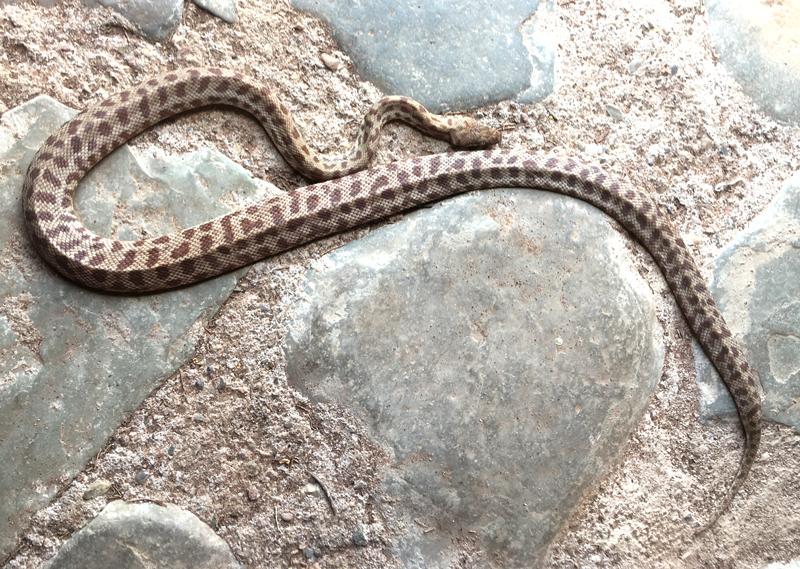Stony Steiner writes in from Warraweena Conservation Park about the rise of numbers of Pythons, Echidnas and Yellow-footed Rock Wallabies.
There are and always were pythons across the Flinders Ranges. They are not easy to spot as they spend a lot of their time almost motionless curled up or move slowly and quietly about, mostly after dark. Their beautiful pattern is some of nature’s best camouflage.
Two species of python can be found on Warraweena; the Carpet or Diamond Python (Morelia spilota) and Stimson’s Python (Antaresia stimsoni). Stimson’s Python is also known as the “large blotched python” or the “inland children’s python” is the smaller of the two species which can grow up the 1m long whereas the Carpet Python can grow longer than 2m.
 Carpet Python / Diamond Python, Warraweena
Carpet Python / Diamond Python, Warraweena Carpet Python / Diamond Python, Warraweena
Carpet Python / Diamond Python, Warraweena Stimson’s Python / Inland Children’s Python, Warraweena
Stimson’s Python / Inland Children’s Python, Warraweena
I live on Warraweena now for almost twenty years and I can confidently say that reports and sightings of pythons have increased over the years. The first python I ever saw in the wild was living at the shearer’s quarters back in 2002, it has been seen there on and off for about 2 years, mostly curled up under the veranda roof behind the kitchen chimney. Some ten years ago reposts of sightings either of a Children’s Python at Old Warraweena and near Mt Hack or Carpet Pythons west of Sliding Rock or Sandy Camp, Dunbar or Mt Stuart came in from guests, some of them I have spotted myself; actually almost ran over the (probably) same large Carpet Python twice at the same location in the dark and more than 2 years apart! Now I had 3 sightings alone between late November and early December; a Stimson’s Python near Donlon’s camp, one Diamond Python near the lookout and one at Nantibury. Continue reading “Warraweena Pythons, a key indicator for successful biodiversity management?”
